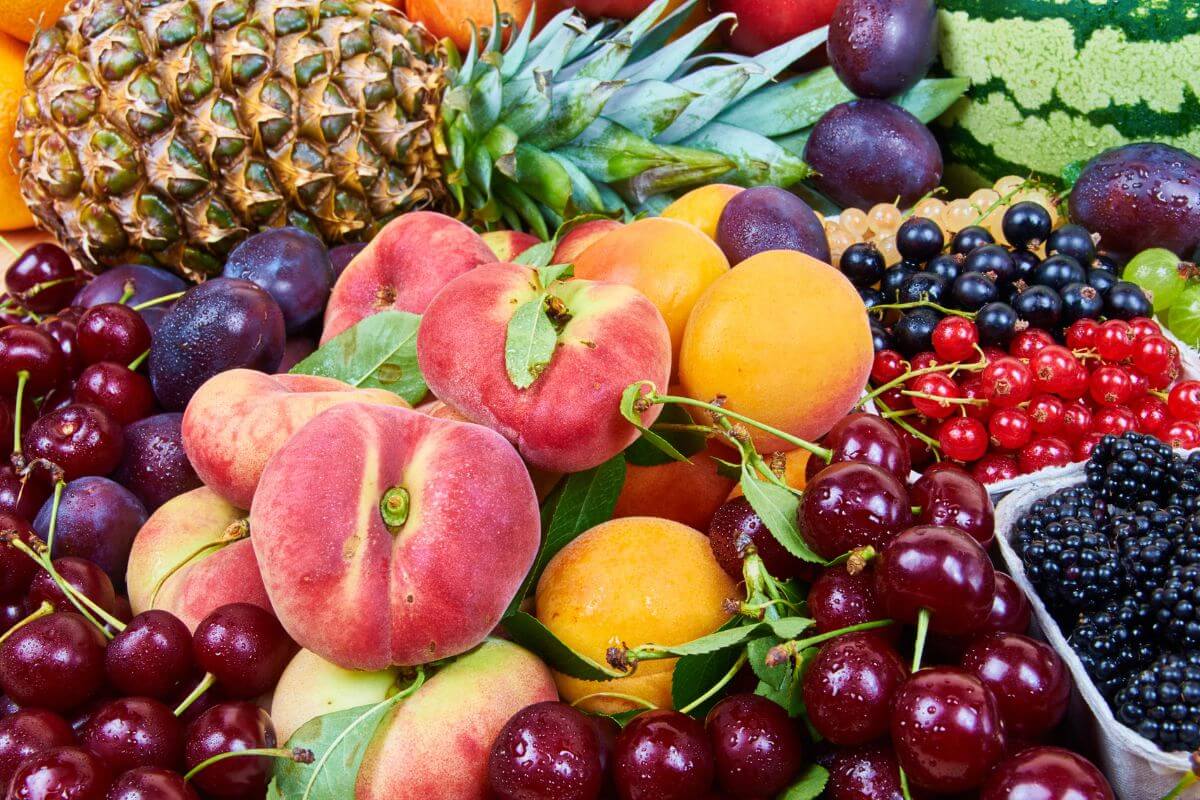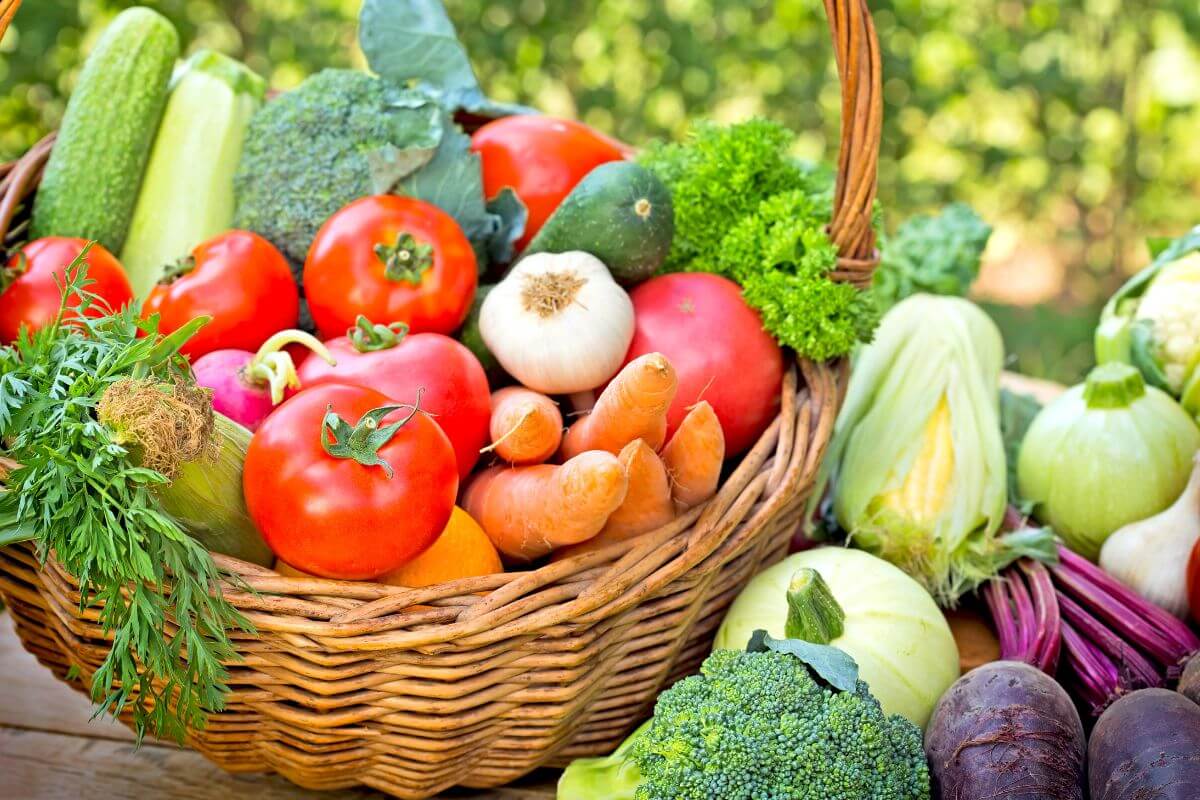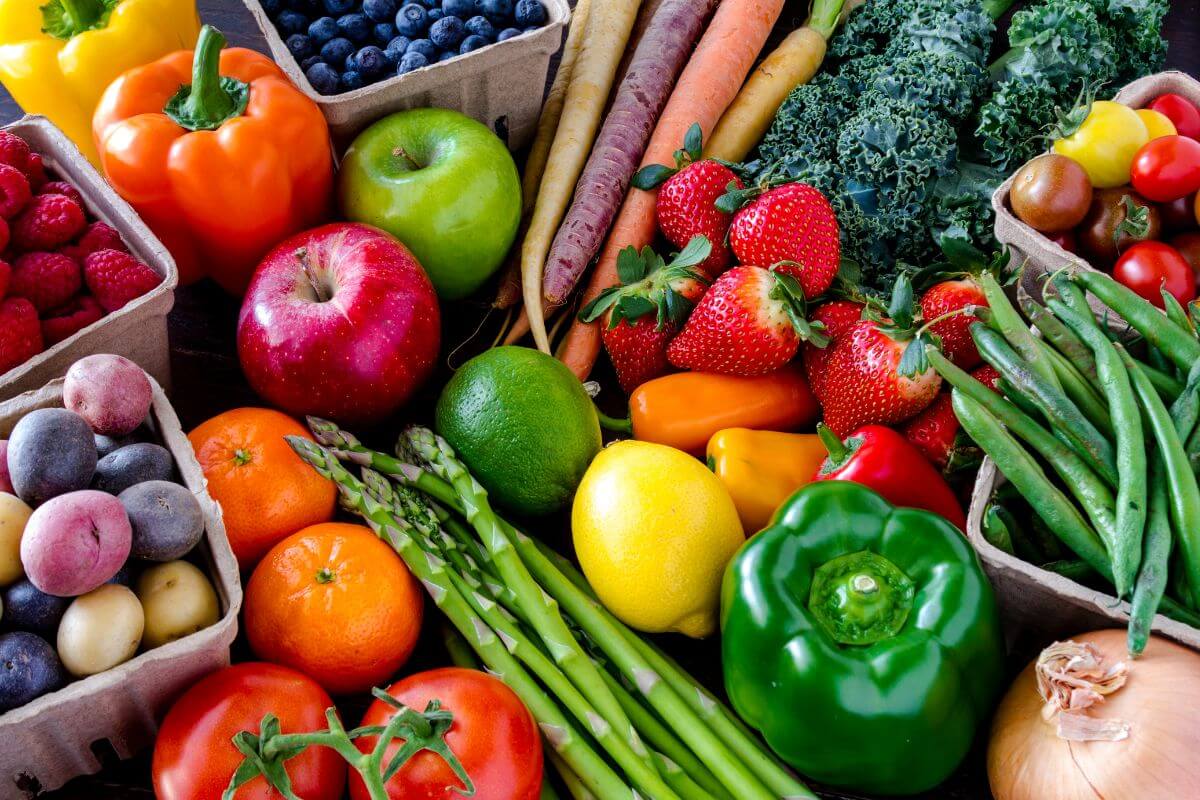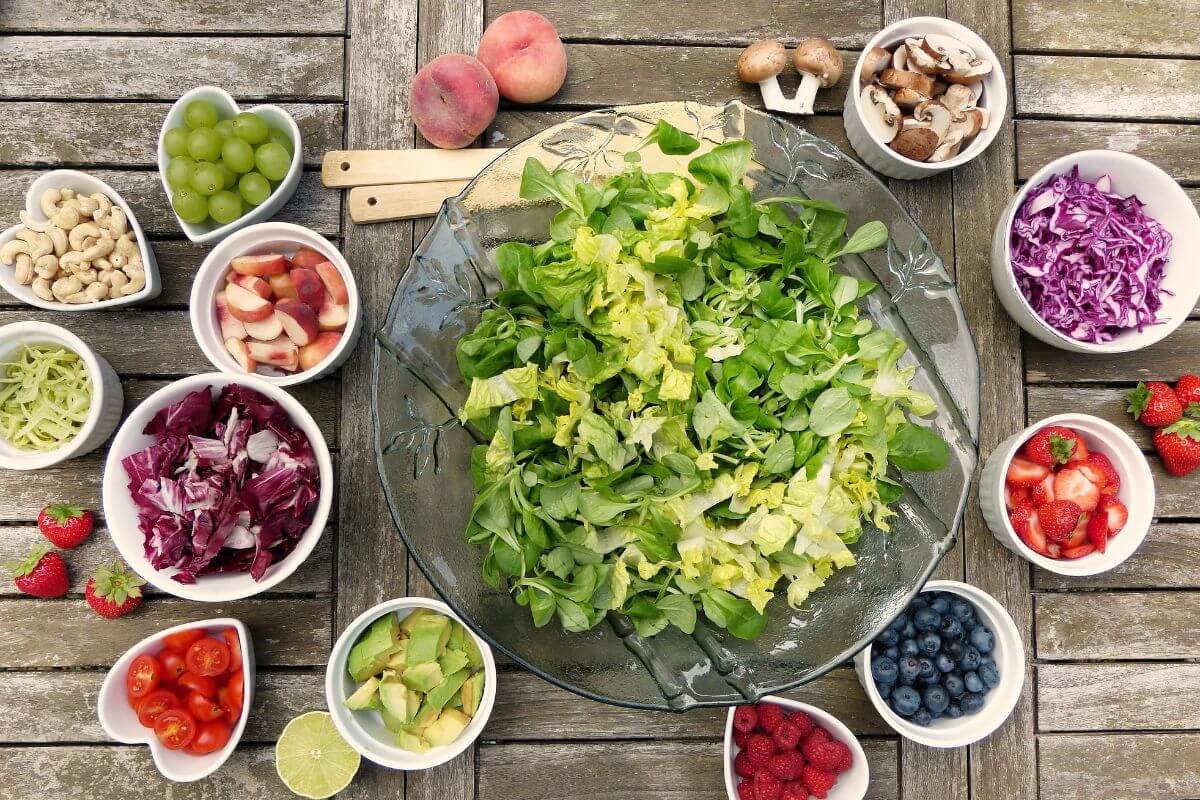Fruits and vegetables have different roles in our diets and, the home gardens that we put our valuable time and effort into. Recognizing their intrinsic differences isn’t always an easy task. It’s important to understand that both are nutritious but, they have different inherent functions.
This guide will demystify the contrasts between fruits and vegetables. It will cover their health benefits and biological plant traits.
Why exactly does knowing the difference between fruits and vegetables matter? Because, understanding the difference is a crucial element that everyone needs to make healthy food choices for themselves and their families. It will also make it far easier to maintain a successful garden.
7 Key Takeaways on Fruit vs Vegetable
- Fruits are ripe ovaries with seeds. Vegetables are the other miscellaneous edible plant parts like the roots, stems, and leaves.
- The culinary classification of fruits and vegetables is based on taste. Fruits are sweet or sour. Vegetables are savory.
- Fruits can be categorized into 3 categories: simple, aggregate, and multiple fruits. Vegetables are grouped into leafy greens, root vegetables, starchy vegetables, and other vegetables.
- Both fruits and vegetables are rich in vitamins, minerals, fiber, and water. Fruits usually have more sugar and calories, whereas vegetables are often richer in calcium, iron, and magnesium.
- Eating fruits and vegetables can help reduce the risk of heart disease, cancer, and diabetes. It also can help control weight and blood sugar levels. They fight free radicals because they have high antioxidant content.
- Some fruits, like tomatoes, cucumbers, peppers, and pumpkins, are often mistaken for vegetables, largely due to their culinary usage.
- You can eat vegetables in many forms: fresh, frozen, canned, or dried. You can also prepare them in a multitude of exciting ways. This makes them a versatile addition to the diet. Fruits are typically eaten raw but are also used in a dizzying array of desserts and drinks.
What Is a Fruit?

It turns out that fruits are actually the mature and ripened ovaries of flowers. They contain seeds and usually have a fleshy outer layer. They are the soft and pulpy parts of flowering plants. They help plants reproduce by scattering seeds.
Fruits can be classified into three groups, which are:
- Simple Fruits – Simple fruits start from just one part of a flower’s ovary.
- Aggregate Fruits – Aggregate fruits are like the team effort fruits, with many ovaries from one flower coming together.
- Multiple Fruits – Multiple fruits are like a big blend of all the flowers, mixing a bunch of them into one fruit.
Here’s a table to help you spot the differences with some common examples:
| Classification | Examples |
|---|---|
| Simple Fruits | Apples, Apricots, Avocados, Bananas, Cherries, Eggplant, Grapes, Kiwi, Mangoes, Melons, Peaches, Peppers, Pumpkin, Zucchini |
| Aggregate Fruits | Strawberries, Raspberries, Blackberries |
| Multiple Fruits | Pineapples, Figs, Mulberries |
What Is a Vegetable?

Vegetables are mainly annual plants. They have edible parts that can be eaten raw or cooked in a host of different ways. They are versatile foods that can be enjoyed fresh, frozen, canned, or dried. You can prepare them in many ways. You can use them whole, cut up, or mashed. This unlocks many culinary possibilities.
We can group vegetables into four main types. They each bring something special to our plates, making our meals both tasty and nutritious:
- Leafy Greens – Leaves are where plants do most of their miraculous photosynthesis. This means they usually have the most vitamins and minerals.
- Root Vegetables – Root vegetables mainly grow underground and store starch. They often have lots of fiber and carbohydrates because of this. But the carbs are mostly starches, not sugars.
- Starchy Vegetables – Starchy vegetables contain a lot of carbohydrates, mainly starch. They have more carbs, but by no means does this make them less healthy. This is because they have fiber, vitamins, minerals, and antioxidants.
- Other Vegetables – The other vegetables include those that don’t fit in the other categories. Many of these vegetables consist mainly of a stem and are rich in proteins, fibers, and vitamins.
Here’s a handy table to help you spot which belongs to each vegetable category:
| Classification | Examples |
|---|---|
| Leafy Greens | Spinach, Lettuce |
| Root Vegetables | Carrots, Beets, Parsnips, Celery root, Radishes |
| Starchy Vegetables | Potatoes, Corn, Peas, Beans, Pumpkin, Squash |
| Other Vegetables | Asparagus, Broccoli, Cabbage, Cauliflower, Tomatoes |
What Is the Difference Between Fruits and Vegetables?
Fruits and vegetables are categorized in two ways: botanical and culinary. Botanical classification is based on the plant’s parts. Culinary classification is based on their taste.
| Classification | Botanical | Culinary |
|---|---|---|
| Fruit | The fruit develops from flowers. It grows and will contain seeds. It’s from a seed plant. | Fruits usually have either a sweet or sour flavor and are often eaten raw. They are generally used in desserts or drinks. |
| Vegetable | Vegetables are all edible plant parts that are not fruits or seeds. They include leaves, roots, and stems. | Vegetables have a more savory or mild taste, so they are used as a side dish or main course. Most vegetables are not sweet and are usually cooked before eating. |
Both types of classification help determine which foods belong to each group. They can even overlap or cause confusion. The simplest way to classify them is by taste, whether they are sweet or savory taste.
What Fruits Are Mistaken for Vegetables?
Several fruits are commonly mistaken for vegetables. These include avocados, cucumbers, tomatoes, and peppers. Also, winter squash, olives, pumpkins, peas, eggplants, and zucchini.
The tomato fruit or vegetable debate is a famous controversy. Tomatoes are fruits. Yet, their taste makes people call them vegetables. They’re mostly grown for their edible flesh and used in cooking.
The U.S. Supreme Court settled the debate. It ruled in 1893 that tomatoes are vegetables, not fruits.
Can Vegetables Be Considered Fruits?

Some veggies are sweet enough to be called fruits. This is because they taste sugary and are used in ways similar to fruits, like in baking.
Sweet potatoes and yams are sweet vegetables that can be considered fruits. They are often cooked or mashed into a side dish or dessert.
Sweet potatoes are a type of root vegetable with a sweet taste. They are often served as a side dish or added to soups and stews. Unlike other root vegetables, sweet potatoes do not contain starch and also, as an added bonus, are rich in vitamin C and fiber.
- Learn more: Is Sweet Potato a Fruit or Vegetable?
Candied yam is a baked dish made from cooked yams. Yams are edible tubers, similar to potatoes. Other vegetables with a sweeter flavor include:
- Beets
- Carrots
- Rutabagas
- Turnips
They might not be the first thing that comes to mind when you think of sweet treats, but these veggies can add a nice twist to your meals.
What Are the Nutritional Values of Fruits and Vegetables?
Fruits and vegetables contain vitamins, minerals, fiber, sugar, and water. However, some nutrients are found only in certain types of food. For example, most fruits have high potassium. Vegetables have more calcium, iron, and magnesium.
Let’s dive into the nutritional values of fruits and vegetables:
- Vitamins and Minerals – Fruits and vegetables have many nutrients. They also have many antioxidants.
- Fat and Sodium – Both vegetables and fruits contain low amounts of fat and sodium.
- Sugar – Fruits contain high levels of natural sugar, so they also have higher calories. But the sweet flavors in fruits are why they’re also more appealing to children.
- Fiber – Both fruits and vegetables contain high amounts of fiber. Per 100 grams, fruit usually contains 2 to 15 grams of fiber, while leafy vegetables provide 1.2 to 4 grams of fiber.
- Water Content – This will vary depending on the item. For example, leafy vegetables usually have 84-95% water. Fruits have less water, 61-89%.
The USDA suggests eating fruits and vegetables daily for various vitamins and nutrients.
What Are the Health Benefits of Fruits and Vegetables?

Fruits and vegetables are important for a healthy diet. A preponderance of evidence shows their consumption’s positive effects and health benefits. These include:
- Reduce the Risk of Heart Disease – Eating 10 servings of fruits and vegetables a day is linked to a 28% lower risk of heart disease. It also has a 31% lower risk of early death (source).
- Help Prevent Cancer – Eating more fruits and vegetables greatly reduces the risk of many types of cancer. This is especially true for cruciferous vegetables, tomatoes, and citrus fruits. They can
- Reduce the Risk of Developing Diabetes – Eating more fruits, especially berries can cut type 2 diabetes risk. Also, adding green, yellow, or cruciferous vegetables helps reduce it (source).
- Control Your Weight and Blood Sugar Levels – Fiber in fruits and vegetables slows the digestion of carbs. It also slows their absorption. This helps you feel full longer and avoid overeating.
- Fight Free Radicals in the Body – Free radicals damage cells. They can cause chronic diseases like cancer and heart disease. Antioxidants in fruits and vegetables neutralize these harmful chemicals. They also promote cell growth and repair.
Eating fruits and vegetables daily can greatly improve our health and well-being.
Fruit vs Vegetable Final Thoughts
Fruits and vegetables are essential for a healthy diet, each offering unique and delicious benefits. Fruits are the mature ovaries of flowers that contain seeds and are usually sweet or sour. Vegetables are other edible plant parts. They include roots, stems, and leaves. They are usually savory.
Understanding these differences can help you choose healthier food. It can also help you care for your garden plants. Including them in your daily diet ensures that you get their maximum benefits.
Fruits and vegetables are not just tasty and filling. They also offer essential vitamins and minerals that a healthy human body needs. Eating a mix of these foods gives your body various nutrients. This boosts overall health and well-being.
Fruit vs Vegetable FAQs
1. What Defines a Fruit vs. Vegetable?
Fruits come from flowering plants and have seeds inside. They are typically sweet or sour. Vegetables are parts of plants like roots, stems, leaves, or bulbs. They are usually savory.
2. Is a Cucumber a Fruit or a Vegetable?
Botanically, a cucumber is a fruit. It grows from a plant’s flower and has seeds. Yet, in cooking, we often label it a vegetable. This is due to its savory taste and use in dishes like salads and sandwiches.
3. Is a Pumpkin a Fruit or a Vegetable?
A pumpkin is a botanical fruit because it grows from a plant’s flower and has seeds. But in cooking, it’s often seen as a vegetable. This is because it has a savory flavor and is used in savory dishes like soups, stews, and pies.
4. Is Any Fruit a Vegetable?
All fruits come from flowering plants and have seeds in the botanical sense, so none are considered vegetables in this aspect. However, some fruits like tomatoes, cucumbers, and pumpkins are considered vegetables. This is because they are often used in savory dishes.
Learn more about gardening with these excellent reads:

